One key issue that has had significant influence over the often torrid debate when it comes to military ship building in Scotland is the reduction of the Type 26 procurement from thirteen to eight vessels.
The often passionate arguments from those who support and oppose Scottish independence makes a balanced view of military ship building in Scotland and its future difficult as it can often end up with people shouting their ‘preferred’ facts at each other over social media rather then examining the issues.
This article is a fact checking article, if you believe we’ve made an error you can submit a correction in line with our correction policy.
In short, in the timeframe 2015-35 Scottish shipyards are building 24 vessels, including one for Ukraine. 18 of these vessels are frigates.
With the change from 13 Type 26 Frigates to 8 Type 26 Frigates and 5 Type 31 Frigates (plus some Offshore Patrol vessels), there was the perception in some corners that work had been cut for Scotland, what actually happened?
What happened after the independence referendum was the five-yearly occurrence known as a defence review, this time called the ‘Strategic Defence and Security Review 2015’. The initial Type 26 Frigate order had been cut back from 13 to 8 in order to fund more of the immediate spending outlined in the 2015 Strategic Defence and Security Review.
As a result of Type 26 being reduced to 8 ships, it was announced that five general purpose frigates were to be designed and ordered. These became the the Type 31 Frigates and they were ordered from Babcock at Rosyth.Part of the reason for this change was understood to be that the MoD is hoping to reduce its reliance on BAE and cut the costs of procurement.
There are plans for 8 Type 26 Frigates and 5 Type 31 frigates to be built in Scotland, 5 River class Offshore Patrol Vessels have been launched. The original plan was for 13 Type 26 Frigates at one yard, years later the plan is now 18 vessels of three types sustaining work at three yards.
Jonathan Chartier, a defence commentator working in Government and local government IT services, explains the issue.
“Traditionally the Royal Navy has purchased ship classes from multiple yards and in distinct batches, this not only spreads programme costs but also allows for changes and improvements to the base design plus rectification work as well as keep shipyards open with a constant steady stream of work. Certainly for famous classes like the Type 12I Leander this batch production was necessary just to keep up with the radical changes seen in electronics and systems over their extensive career.
So whilst the Royal Navy would have a projected number to be built it was not unusual for the number of batches to be reduced or on some occasion increased as needed without comment by the wider general public to satisfy the requirements of the Admiralty and always lurking in the background Treasury. This practice continued through to the Type 23 class which was built by competing yards Marconi Marine (YSL), Scotstoun and Swan Hunter, Wallsend. It is actually possible to tell where an individual Type 23 was built by inspecting its internal pipe fittings. With warship construction consolidated on the Clyde Type 26 was projected to be a build of thirteen vessels again through multiple batches in keeping with common practice, for those familiar with military ship building the thirteen projected was at best a placeholder subject to change.
Certainly it was well known in the period after the 2010 Strategic Defence and Security review it was clear that the equipment programme was again coming under extreme financial pressure again. In that circumstance it was unfortunate with a Scottish Independence referendum in the running David Cameron and the Better Together campaign unwisely turned routine procurement that could be subject to change into a political football by making it a direct promise to Scotland; thirteen Type 26 Frigates would be built on the Clyde alongside a new ‘Frigate Factory’.
The Labour Party exacerbated the situation with a leaflet spelling out that if Scotland remained in the Union it would get 13 Type 26 frigates. The Prime Minister and other Ministers plus representatives of the Better Together Campaign regularly spelled out that a Scotland in the Union would be getting thirteen Type 26.”

So when the referendum was over and won for Better Together, the reality that Thirteen Type 26 was not deliverable within the allocated budget set in.
“A few months after cast iron guarantees for thirteen Type 26, the order was cut to eight as part of the 2015 Strategic Defence and Security with a compensatory order for five General Purpose frigates proffered and some Offshore Patrol vessels ordered in their place. Considering what was promised in very clear terms by the Prime Minister, Better Together and other Parties including Labour it is understandable why Scottish Nationalists have fixated on it as a totemic issue. Put simply thirteen Type 26 was a core promise by Better Together in the Independence campaign that has been, technically, broken.
Of course the more nuanced point to be considered is that Scotland gained five River class Batch II Offshore Patrol Vessels and five Type 31 Frigates (plus a ‘frigate factory’ in Rosyth) as compensation for the loss.”
You can read more on this from Jonathan Chartier by following the link below.
A Ukrainian warship?
Ukraine previously signed a memorandum with the UK to secure £1.25 billion in funding to build new military vessels for the Ukrainian Navy, the first ship will be constructed in the UK and the remaining 7 vessels will be built in Ukraine.
Type 32?
The new Type 32 Frigate will be built in addition to the Type 26 and Type 31 Frigates in the hopes of bringing the escort fleet up to 24 vessels from its current 19.
The Defence Secretary previously confirmed that Rosyth will be building more vessels than previously planned, with the Type 32 Frigate going into built at the yard after the Type 31 Frigate build finishes.
Ben Wallace, the Defence Secretary, recently stated that Rosyth would be building Tytpe 32 Frigates in addition to Type 31 Frigates.
“We are committed to building the Type 26 in the United Kingdom; it is under construction on the Clyde. In Rosyth, work is ongoing to build the facility needed to build the Type 31s and the subsequent Type 32s. He also knows that I recently recategorised the future Fleet Solid Support ship as a warship. I intend to make sure that, if not entirely, there is a considerable degree of UK build in that process, subject to tender. I have to be cautious about the contract, because the competition is to begin soon—very soon.”
According to the recently released ‘Defence Command Paper’, the Type 32 frigates will be designed to protect territorial waters, to provide persistent presence overseas and to support Littoral Response Groups.
The first mention of a new Type 32 frigate came in the Prime Minister’s 19 November statement. He said: “We are going to develop the next generation of warships, including multi-role research vessels and Type 32 frigates.”
The Defence Command Paper, titled ‘Defence in a Competitive Age’, describes the planned programme:
“Type 32 frigates, designed to protect territorial waters, provide persistent presence overseas and support our Littoral Response Groups.”
You can read more by clicking below.


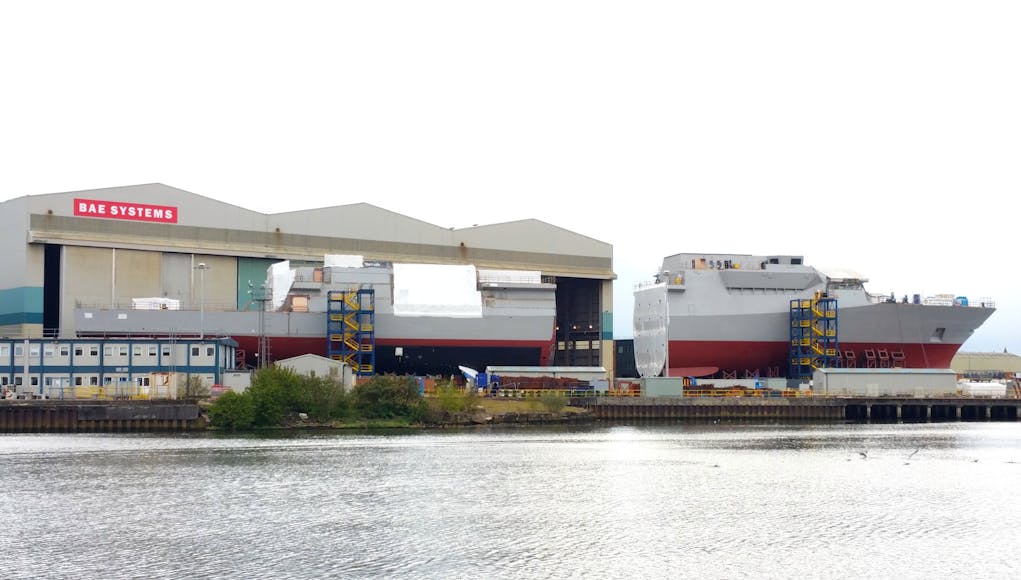
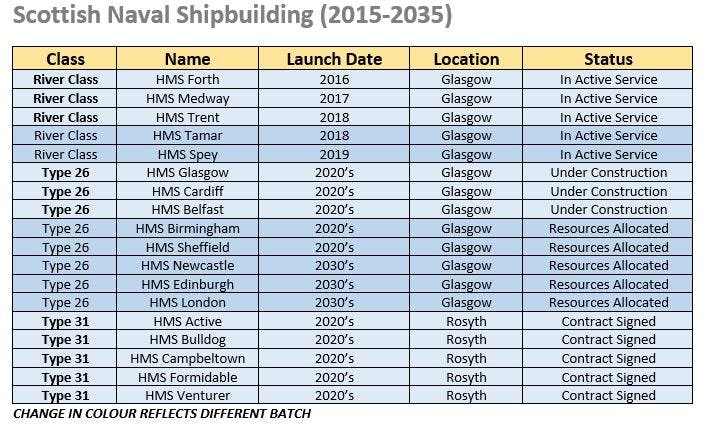


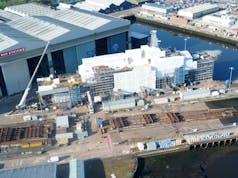
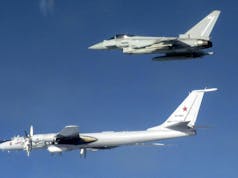
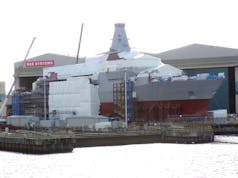




Is this still being winged about by the Nats party?
I am sure that there was mention of an underwater cable surveillance support vessel?
Yes, I believe Russian interference was cited as the necessity for that. However, it sounded more like a replacement for HMS Scott.
Also not mentioned is when 26s are completed they wil be building the 83s as the 45s replacement. So plenty of planned ship building. Why don’t the Scottish government diversify there industry so as not to be reliant on naval ship building for jobs. Poor leadership that why.
The Scottish economy isn’t reliant on naval shipbuilding, like the rest of the UK it’s dominated by the services industry.
The communities around Glasgow, those bastions of Scottish nationalism, however, ARE reliant on shipbuilding. Tends to happen when the area has historically been a shipbuilding titan for the past century and a half.
The government of independent Scotland will continue with the contracts to build these vessels albeit with some changes to the kit and spec , as there is little in the current naval estate that would be of any strategic use to Scotland and its defence of its territorial waters and exclusive economic area
What is this speculation based on?
Necessity. Aircraft carriers are of no value to Scottish defence !
not sure that even makes sense, any ships not completed would likely be built to floating hulls then sailed South for fitting out. if an Independent Scotland wanted brand new frigates they’d have to go through a tender process and sign a contract accordingly surely?
If Scotland can find a use for them why would they be floated south? We have the capacity to complete them to the standard which Scottish defence requires.
Because Scotland hasn’t paid for them, why would Scotland just get to keep anything that was still in progress, the contract is to supply the Royal Navy? Not really following why Scotland just gets to keep anything still in build.
Insert ‘the answer is not enough’ comment here